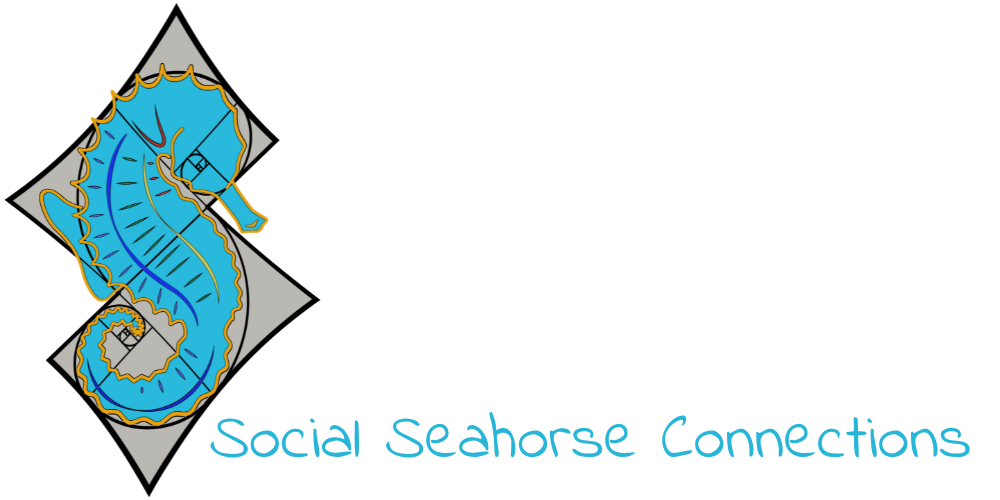“Don’t just do something. Stand there.”
This is the advice that John Green took to heart from a supervisor when he was doing student chaplaincy work at a children’s hospital as a young man. John is a renowned author and the older brother of Vlogbrothers who has eloquently spoken about the power of silence in the most difficult of human interactions.
When we think of making connections, particularly through conversation, we usually focus on what we can say and how to say it well. We can be incredibly fearful of saying the wrong thing; yet, as much fear as we hold about saying the wrong thing, we are perhaps far more terrified of silence so I want to address its value today.
When I recently came across a short interview clip of Mr. Rogers reflecting on the value of silence, it reminded me of the need to sometimes just “stand there,” or perhaps in the case of conversations, “sit there.”
Be.
Be with people without having to say anything.
In the clip, when the interviewer Charlie Rose asks, “Who's made a difference in your life?” Mr. Rogers responds by talking about the powerful impact on his life of people who allowed for silence.
“Oh, a lot of people, but a lot of people who have allowed me to have some silence. And, I don't think we give that gift very much anymore. I'm very concerned that our society is much more interested in information than wonder, in noise rather than silence.”
At the end of the interaction, he muses, “Oh, my, this is a noisy world.”
The power of silence in communication
Intentionally adding silence to our end of the conversation allows the other person to become more reflective; it gives them the gift of being allowed to be silent as well.
Let’s look at ten ways incorporating brief periods of silence in our communication creates better connections.
Fosters listening: Active listening isn’t difficult to learn, but it is often incredibly difficult to practice. The first step of active listening is simply being quiet. Try not saying anything. Just sit still and listen.
Don’t just say something; sit there.
Generates empathy: When you provide periods of intentional silence in a conversation, it allows you to focus on the other person’s communicated emotions and practice empathy.
Builds respect: Pausing to reflect demonstrates respect for the speaker’s thoughts and feelings. It gives them space to consider if they have more to share.
Encourages honesty: When others know we are listening, it creates a comfortable space for them to share their true thoughts and feelings. When we don’t feel rushed in a conversation, we are more likely to communicate more of our thoughts with the other person.
Reduces misunderstandings: Taking time to pause can prevent hasty responses that might lead to misunderstandings. Taking a moment to consider a response creates value for both parties.
Creates space for emotion: I’ve witnessed people able to connect with their emotions when they are given a little silent space in a conversation to do so. Sometimes we rush past what we are feeling when we think every moment has to be filled with words. When we provide that space for the other person, we allow them a moment to feel, connect, and possibly express the emotions they are experiencing.
Enhances memory: Research shows that a few moments of quite helps us consolidate the information we are taking in during a conversation. When we try to process too much content at once, it interferes with our ability to recall and understand what we have already heard.
Reduces stress: Hostage negotiators know that slowing down the rate of speaking and incorporating periods of silence have a calming effect, reducing stress and anxiety in tense situations.
Strengthens bonds: Some of the most powerful connection experiences I’ve been a part of have been in times when words weren’t sufficient. I remember rushing to a dear friend’s home whose teenage granddaughter had been murdered. Few words were exchanged; we simply spent time together in silence. Those kinds of moments bind people together.
Promotes reflection: And finally, as Mr. Rogers shares, we live in a noisy world in need of quite spaces that allow us to reflect. Those times allow us to grow, connect, and create community. Silent pauses in conversation make room to reflect on what has been said, leading to more thoughtful responses from both parties.
These ten benefits from active listening to promoting reflection are all building blocks for connecting with others in ways that create stronger communities.
Let’s practice the art of silence in conversation this week.
Don’t just say something; sit there.
Golden Connection Challenge:
Practice brief moments of silence as part of your communication this week.

